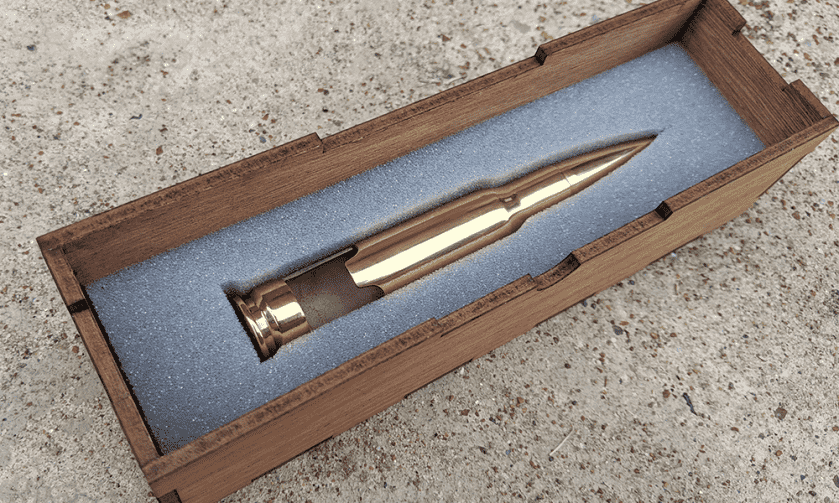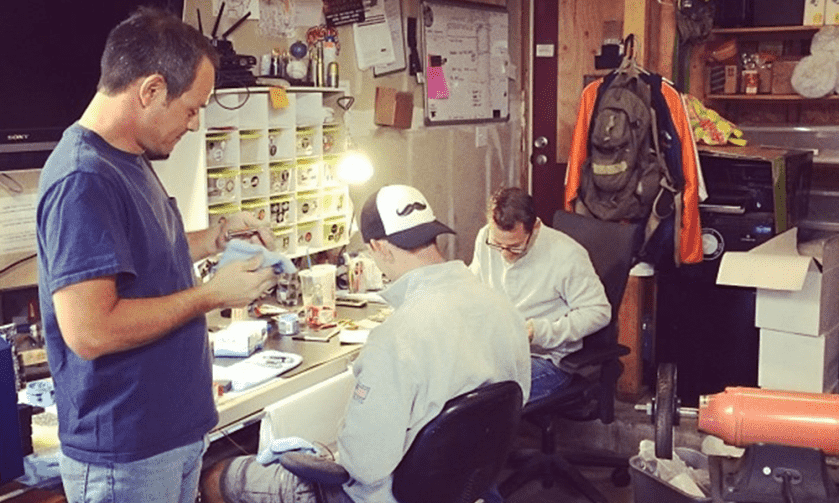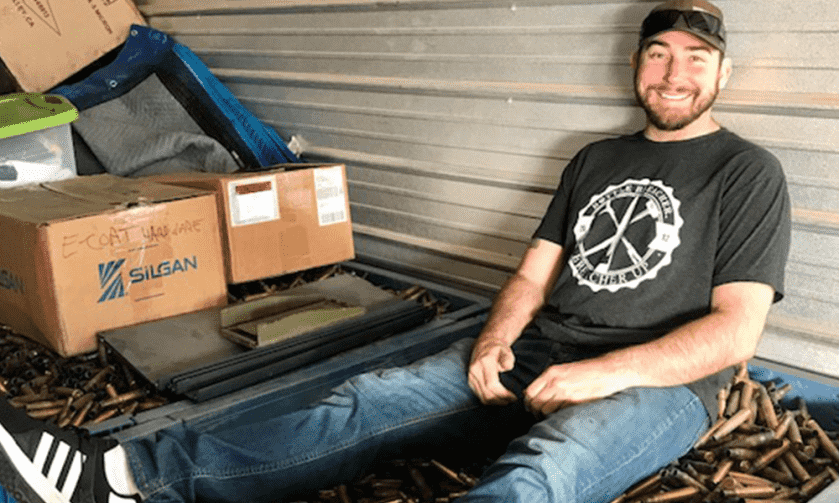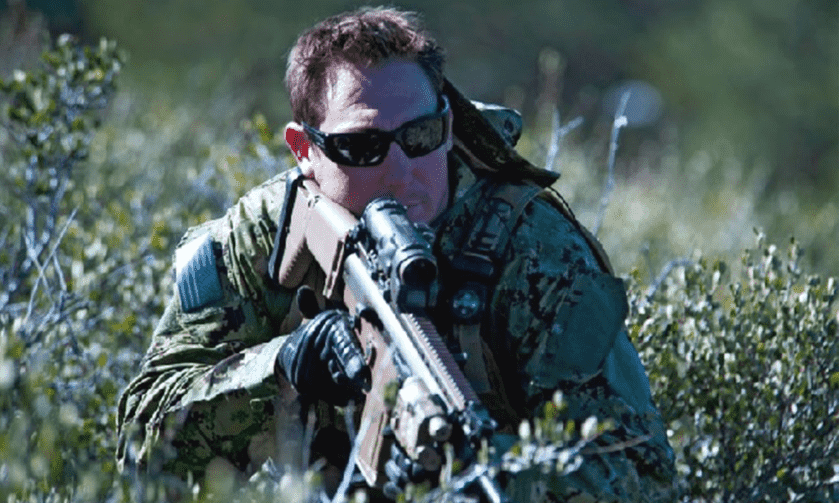
Eli Crane hadn’t slept for over 100 hours.
The would-be Navy SEAL was nearing the end of his second Hell Week—a torturous five-day slog during the SEAL’s legendary BUD/S training—and his boat crew had just earned the right to be the first in line for a hot meal of spaghetti and French bread (or, the only answer to the question, “What is pain?”).
Crane and his boat crew were exhausted, wet, cold, and sandy.
Basically, “guys look like shit,” Crane summarized.
They were sitting down to their well-deserved meal when an officer walked up and said one of the crew needed to stay in the parking lot for “boat watch.”
“Everybody’s head went down. Nobody wanted to make eye contact and go stand over boats in the parking lot,” Crane said.
But this was Crane’s second time through BUD/S, and he’d learned a thing or two. He had flunked out the first time not because he had quit but because “I was focused on me,” he said
“I was focused on my comfort level and my body holding up. That isn’t what they’re looking for.”
So, he decided to take one for the team. And standing at parade rest in the parking lot, while his teammates enjoyed their spaghetti, Crane had an epiphany.
“It’s kind of a stupid story, but it’s where the light bulb clicked on for me about what a team guy really is,” he said. “I finally realized that’s what I had been missing. I was missing the ability to put them before me. It was cool. That’s when I had my team-guy epiphany moment.”
From SEAL to Businessman
Crane’s team-first attitude has earned him huge success in the private sector as well as the military. Most people know him as the Founder and CEO of Bottle Breacher and one of Shark Tank’s most famous contestants.
Crane started Bottle Breacher while he was still working stateside for the Navy’s Special Warfare Group 1 Training Detachment. His brother brought home from the Philippines a bottle opener made from a .50-caliber shell, and Crane thought he could make something similar—but better.
So, he broke out his Dremel tool and went to work.


“It was at that point that the lightbulb went on. There’s something here,” he said. “It’s not that complicated. Even a knucklehead like me can figure out how to run with this.”
His initial goal was to make $500 per month selling his product online. The first month, Bottle Breacher did $375 in sales. By month six, they were up to $7,000. Eighteen months later, they were pulling in $80,000 per month.
Bottle Breacher was successful from the get-go (obviously), but it launched into hyperdrive when Crane and his wife, Jen, appeared on the hit ABC show, Shark Tank.
The Cranes’ pitch caught the eye of Kevin O’Leary and Mark Cuban, who both invested in Bottle Breacher and helped the Cranes turn their garage-based business into a multimillion-dollar enterprise.
Today, Bottle Breacher sells a variety of military and firearm-themed bottle openers along with keychains and whiskey bullets. Crane runs Bottle Breacher, works as a rep for Sig-Sauer, and partners with nonprofits that help vets and their families.
From Failure to Success
Crane’s seen massive success in his life, but it wasn’t always that way. He likes to tell people that he was once fired from Baskin Robbins and Dairy Queen in the same year. As he tells it, he barely finished high school.
But he wanted to enter the military as an officer, so he went to the University of Arizona and completed his freshman, sophomore, and junior years. But on September 11, 2001, he dropped out of college (during his senior year) and was on a plane within a week to start Navy boot camp in Chicago.
He made it through boot camp and Gunners Mate “A” school, and soon found himself at the relatively young age of 22 in Coronado, California, as a member of BUD/S Class 242.
He made it through Hell Week but was released before finishing for sub-optimal performances in running, swimming, and obstacle courses. The academic review board who made the decision encouraged him to try again but said he wasn’t ready to finish.
“That came as a pretty tough blow,” Crane said. “I definitely deserved what I got, and it took me a while to realize that. Had I done a better job of preparing myself and being a better teammate, I would have never even given the instructors a chance to [kick me out]. That was a very valuable life lesson.”
Crane served his time on a Navy ship (what he calls a “floating prison”) and completed BUD/S about two and a half years later with Class 256.

He immediately deployed to Iraq in 2006 and served in SEAL Team 3, where he worked as a turret gunner, and with the Mark 48 FN heavy machine gun (what they called “The Pig”) and the FN Mark 36 (what they called “The Piglet”). In subsequent years, he served in two additional deployments, first with Bravo Platoon and then with Delta.
Once in the SEALs, Crane had to deal not only with the stresses of warfare but also with the pressures of being a newly minted special operator.
Crane served alongside NASA astronaut Johnny Kim, Congressman Dan Crenshaw, and legendary sniper Chris Kyle. Of Kyle, Crane said he enjoyed showing the new guys the ropes—the hard way.
“Chris loved destroying new guys. That was a pretty brutal year,” he said. “But there was a method to his madness. I think deep down he loved all the guys in his platoon. He understood how brutal war was, and he was just trying to prepare us – and have a little fun at the same time.”
Crane turned adversity into success in other ways as well.
When he failed out of sniper school the first time, he purchased an AR-15 and practiced dry-firing so he could eventually pass the 200-yard qualification he had missed.
The first time he sat down with an investor for Bottle Breacher, he was denied outright.
“I didn’t know squat about business,” Crane said. “He smelled it all over me. He tore me apart.”
But rather than give up, Crane started watching Shark Tank. Every time the sharks asked a question he didn’t know, he would look up the answer.
The first time he applied to be on Shark Tank, he didn’t hear back. So, he waited in line from 1:00am to 1:00pm to have a shot at an open casting call. Two days later, he received a call from Shark Tank’s producers asking him to be on the show.

Even after Crane’s Shark Tank success, the gun-related nature of Bottle Breacher’s products kept them from getting publicity. His investors had an open-door policy with big talk shows like Good Morning America, but they never agreed to feature Bottle Breacher.
That hasn’t stopped the Cranes from building a massive business with a huge following.
“That’s my life,” he explained. “A lot of failure, but a lot of resiliency, too. With all of our limitations, like me not knowing what the hell I’m doing, we’ve still launched a lot of cool products and been really fortunate.”
Lessons Learned
As you can imagine, turning all of that failure into success has taught Crane a thing or two. So has his experience in combat. We asked Crane what his advice would be for legally armed citizens trying to prepare for a self-defense situation.
Along with dry-fire practice, Crane is a big believer in mag capacity.
“The gun fights I’ve been in, you’re a lot more likely to run out of ammunition than not be able to stop your enemy,” he said. “That’s the reason I’m a 9mm guy as opposed to a .40 or .45 guy. I’ve been in situations where you start running low on ammo. It’s not like a video game.”
That’s also why his favorite gun is his Sig Sauer MCX Rattler chambered in 5.56. He loves its versatility, compact size, and mag capacity.
“It’s a flame thrower because it’s so short, and you can’t suppress it. But if I only have one gun, I have something portable, it has decent range,” he said. “If the [British] SAS is buying it, you know it’s legit.”
More importantly, Crane encourages gun owners not to get complacent in their training.
“Once you’ve established solid principles, try to get out of the habit of being static in your training,” he said.

He recalled a time when one of his instructors encouraged him to learn to shoot with his off hand. He didn’t see the need but he soon had reason to change his mind.
He was with three other SEALs on a nighttime mission in Abu Ghraib, Iraq, when they were ambushed by three insurgents. One carried an RPK machine gun shooting tracer rounds, and two had AKs. Crane was in the lead, so he hit the dirt as soon as the shooting started.
“It was so surreal. They’re shooting at us, and the guy with the tracer, you could see almost every bullet flying over your head,” he recalled.
He knew he couldn’t return fire. All he could see of the shooters were their muzzles flashing about 100 yards away. He knew that if he shot back, they would know he was lying on the ground and hit him.
As soon as the insurgent with the RPK paused to reload, Crane jumped up and ran back to his fellow SEALs. But when he found cover along a wall and began to engage, his adrenaline and awkward shooting position delayed him from getting a good shot.
“That was the night I decided, I’m going to shoot left-handed tonight because it was such a close firefight,” he said. “My pride and stupidity had kept me from training in a way that I would need down the road.”
He advised gun owners to practice even the skills they think they won’t need.
“Don’t be a fool like me because there might be a time when you have to reload one-handed or shoot left-handed or do a mag change with the mag in your knees,” he said.
Ego at the Door
Crane’s success hasn’t made him shy about discussing his failures and the lessons he’s learned from them.
“It’s easy to talk about the things we’ve succeeded in, but I like talking about my failures,” he said.
Crane credits his parents, in part, for his ability to check his ego at the door.
“Mom and Dad raised me to understand that freedom isn’t free,” he said “I know that’s cliché, but they made sure that we understood the jobs of military and first responders aren’t just about paying bills. They’re about something bigger than them, and how we all benefited from their sacrifice.”
Check out Bottle Breacher here. Crane’s Twitter account is also worth a follow.

Great article! We could use more like this!